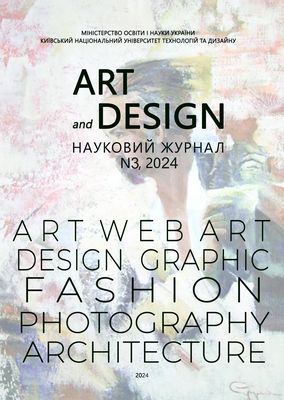A HYBRID APPROACH TO LEARNING BASED ON EMOTIONAL EXPERIENCE AND THE DEVELOPMENT OF INNOVATIVE METATHINKING IN POST-WAR UKRAINE
DOI:
https://doi.org/10.30857/2617-0272.2024.3.7Keywords:
critical thinking, creative thinking, symbols, signs, subconsciousness, consciousness, metadesign, metascienceAbstract
Purpose of the study is to synthesize generalized metaheuristic and metacognitive models, the use of
which in project culture contributes to the formation of innovative creative-critical metathinking of an
individual.
Methodology. The methodology for studying creative activity and training of a designer is based on
the post-neoclassical paradigm of scientific knowledge, subject-object integrity of the system of relations
and dialectically developing relationships in a hybrid innovative learning environment. The methodology
also includes new methods of interdisciplinary research and modeling of reality, integrating physical and
social ontology. It is shown that the development of a structural-functional approach to the perception of
physical and digital reality takes into account the peculiarities of an individual's brain activity.
Results. The main results obtained are a triad of generalized author's metamodels, namely:
1. A heuristic metamodel of post-neoclassical perception of physical reality by a designer, in which
the independence of cognition cycles, as well as the complementarity of paradigms (synergetic, triadic and
semiotic) combines physical and social ontology, which creates new opportunities for the formation of a
designer's creative metathinking in the process of experience. activity.
2. A heuristic metamodel of post-neoclassical perception and reflection of physical and virtual reality
by a conceptual designer, in which the dependence of cycles of cognition, as well as the complementarity of
heuristic metamodels, is achieved through universal triangles (fractal, Pascal, Sierpinski), the structures of
which contribute to innovative activity of the conceptual designer.
3. Cognitive meta-model for the formation of meta-thinking of a designer-conceptualist, which is
based on the spatio-temporal balance of explicit and hidden relationships, the cognitive visualization of
which contributes to the search for harmony in the process of experience-oriented learning and creative
activity through semiotic tools.
Scientific novelty is determined by the complementarity of the structures of the author's metamodels
of physical and digital reality, the synergy of which contributes to the optimization of experience-oriented
models of teaching and self-learning.
The interrelation of the structures of metamodels and their complementarity is the basis of successful
activities in a hybrid learning environment (real physical and virtual mathematical), which facilitates the
transfer of emotional and intellectual content between objects and subjects of the digital world.
Practical significance of complementarity and interconnection of new metamodels of metathinking
allows us to develop: universal criteria for determining the quality of design objects using GenAI; a method
for identifying triads of interconnected opposites in information sources of various natures, the visualization
of which simplifies interdisciplinary interaction between designers; create a personal e-assistant, e-
consultant, e-expert using GenAI.
In post-war Ukraine, interdisciplinary exchange of ideas, methods and successful experiences is
extremely relevant within the framework of a hybrid approach to understanding the harmony of physical
and digital reality, which promotes successful creative activity based on the perception of the harmony of
nature to achieve the unattainable. Further development of experiential learning through the formation of
metathinking is necessary to improve mental health and adapt to inevitable social transformations.

